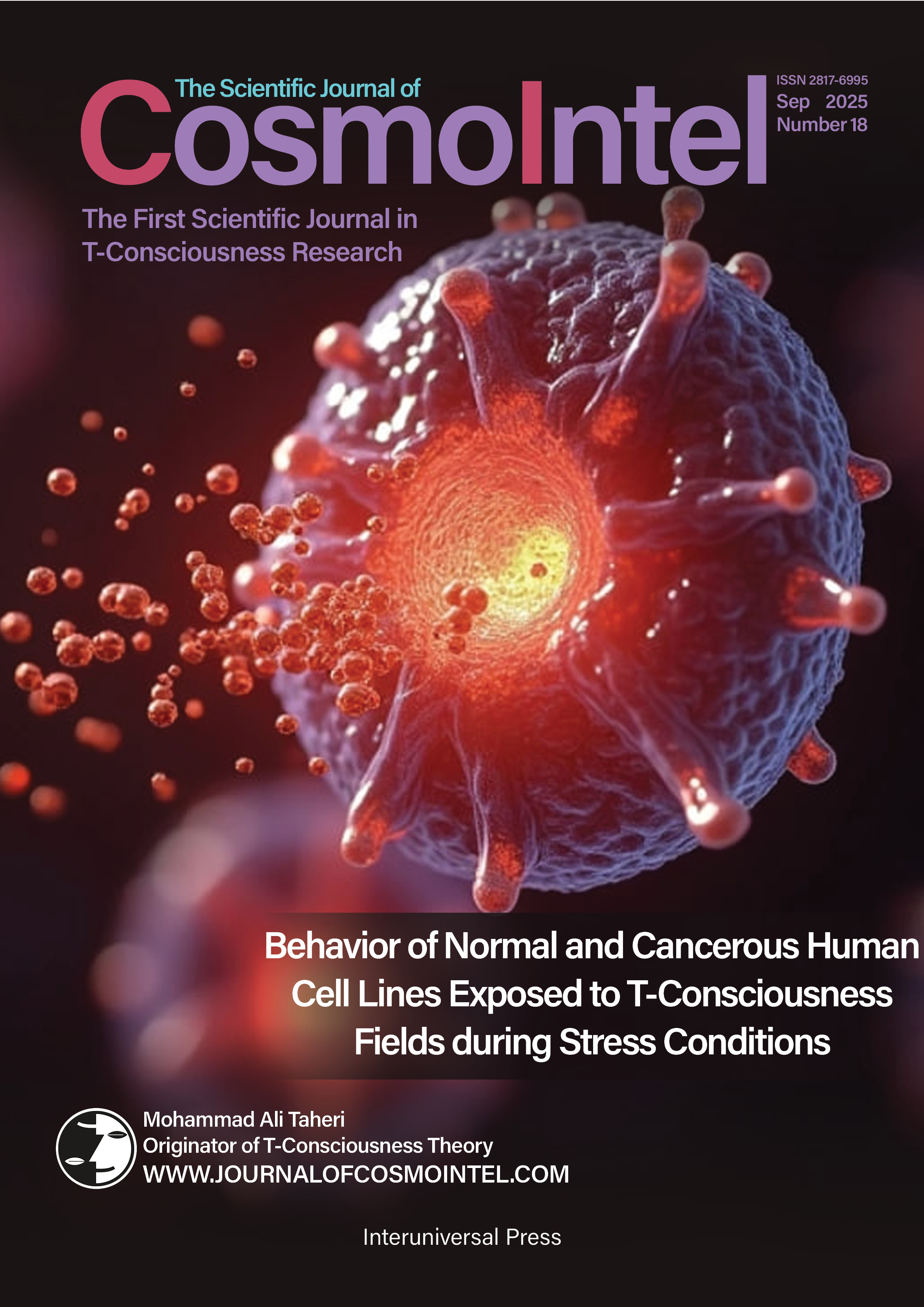The Impact of Faradarmani Consciousness Field on Controlling the Toxicity of Copper Nanoparticles on Lysosomal Membrane Rupture in Human Blood Lymphocytes
Main Article Content
Keywords
Faradarmani Consciousness Field, CuO nanoparticles , Lysosomes, Toxicology
Abstract
This study examines the effect of one type of T-Consciousness Field, named Faradarmani Consciousness Field (FCF), on mitigating the toxicity of copper oxide nanoparticles (CuO-NPs) in human blood lymphocytes. Nanoparticle toxicity, particularly its adverse effects on cellular systems, is a critical concern in nanotechnology. FCF, introduced by Mohammad Ali Taheri, is described as a novel field, neither matter nor energy, and is non-quantifiable. However, its effects can be assessed through standard scientific experiments. In this research, the toxicological effects of CuO-NPs with and without FCF treatment were analysed by evaluating lysosomal membrane integrity and cell viability. Lymphocytes were isolated from healthy individuals' blood and exposed to CuO-NPs at various concentrations for six hours. Results demonstrated that CuO-NPs reduced cell viability in a dose-dependent manner, with an IC50 of 420 μM. The toxicity was linked to oxidative stress, leading to lysosomal membrane rupture and decreased cell survival. Under the influence of FCF, lymphocytes showed improved survival rates despite CuO-NP exposure. FCF significantly (p-value< 0.05) reduced lysosomal membrane damage and increased cell viability. Interestingly, higher nanoparticle concentrations in the presence of FCF corresponded to enhanced cell survival compared to untreated controls. This study highlights the potential protective effect of FCF against the toxicity of nanoparticles, paving the way for further research into their mechanisms and applications in biomedical science.

